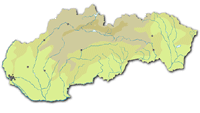From the notion till the 150th exhibition
‘Holding the hands of one another,
hugging , putting our heads together
And from the last sparks
of all what is human in our soul
Lets lay a fire for the Future
And for our Daily Bread.’
hugging , putting our heads together
And from the last sparks
of all what is human in our soul
Lets lay a fire for the Future
And for our Daily Bread.’
(Jenő Heltai)
We started dressing up dolls and doll families into folk costumes typical for Felvidék – Upland (present time belonging to Southern Slovakia, inhabited mostly by Hungarians) and also organizing exhibitions with the help and collaboration of different generations. In our Nursery and Native Schools Autumn of 1996 was the time of decline in number of the pupils. That is why we were looking for new ways to make our schools more popular. In the Association of the Hungarian Teachers in Slovakia an educational program was started for more matriculation in Hungarian Schools. Having felt the importance of the national cultural-treasure heritage and the importance of making our children acquainted with the roots of our traditions I suggested to start collecting dolls dressed-up in folk costumes and showing this collection to the public. Our efforts met a large number of helpers, who not only understood but also helped our work of collection. We could start it by the professional help of our ethnographers Margit Méry and Mária Jókai. During the comparative analysis they determined 29 types of national costumes in 11 regions. With the help of those who encouraged us in this work we could find the first local helpers and informants in each region. We looked for women who sewed their dresses themselves and not only prepared but also weared them and in some cases still wear the traditional dresses of their region e.g. in the villages aroud the Zobor mountain or along the rivers of Zsitva (Zitava), Garam (Hron), and Ipoly (Ipel). Ragdoll-maker folk artists upon our plans prepared the first seven-membered doll families so we could ask the local women to sew the traditional dresses for these dolls in the selected villages and this way not only the adults’ dresses and cloths but also those of the children, young girls’ and boys’ ones were soon prepared. The members of the doll-families ( the grandfather, grandmother, father, mother, the newborn baby, the son and the daughter ) were dressed into copies of the traditional costumes reduced only in size. The grandparents were glad to bring back into memories those original and almost forgotten words they used so often in their young age when speaking about the different cloths. The first exhibition represented costumes of ten different village groups only but transmitting for generations the message of the wish to save the tradition, the mother tongue and the education in our native language. Important place of the travelling show was Budapest. The exhibition ’Traditional-Dress Dolls from the Upland’ was opened in the House of All Magyars January 14th 1999. There were doll-size festive cloths from 28 villages shown to the public. Later on the collection was enlarging. The Association for the Culture and Tourism seated in Búcs took charge of the organizational work itself. We kept in touch with the informants and the dress-makers, who themselves became supporting members of the Association. They also were invited regularly to our conferences on ethnography, programmes and exhibitions in their region. We had several successful shows in numerous parts of Slovakia, in the Millennial Programmes of Hungary, also in Bohemia as well as in Hannover at the World Expo 2000. As a result of the concentration of our forces there are doll-families from 41 villages of 11 great folkloric regions travelling all over our homeland. The 150th jubilee show was held in Búcs September 25th 2005 as a supporting programme of the charity rock concert for the flood victims in Transylvania. During the ten years of our work unfortunately large number of our informants passed away leaving a tiny slice of our traditional dressing culture to us. It depends on all of us how we keep it alive in the future.
Eszter Szobi Kerekes
